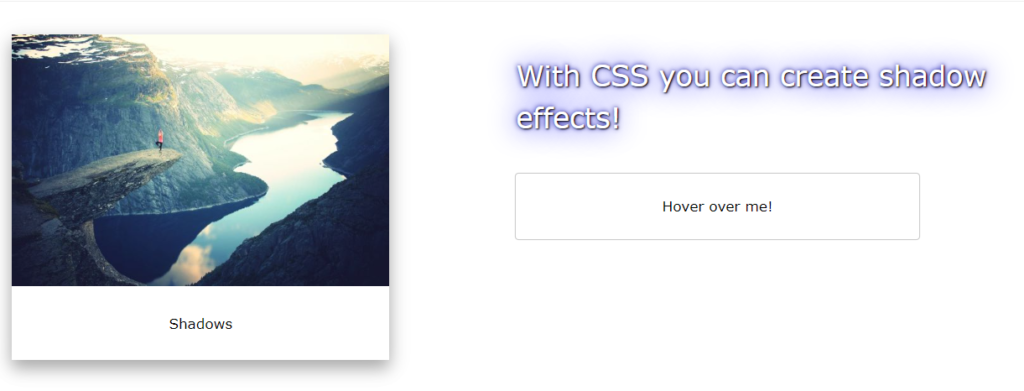
You may add shadows to components and text using CSS.
You will study about the following attributes in these chapters:
Text can be shadowed using the CSS text-shadow property.
The only shadows you provide when using it in its most basic form are the vertical (2px) and horizontal (2px) shadows:
h1 {
text-shadow: 2px 2px;
}
Next, add a color to the shadow:
h1 {
text-shadow: 2px 2px red;
}
Then, add a blur effect to the shadow:
h1 {
text-shadow: 2px 2px 5px red;
}
The following example shows a white text with black shadow:
h1 {
color: white;
text-shadow: 2px 2px 4px #000000;
}
The following example shows a red neon glow shadow:
h1 {
text-shadow: 0 0 3px #FF0000;
}
You can add a list of shadows separated by commas to the text in order to add more than one shadow.
An example of a red and blue neon glow shadow may be seen below:
h1 {
text-shadow: 0 0 3px #FF0000, 0 0 5px #0000FF;
}
The following example shows a white text with black, blue, and darkblue shadow:

h1 {
color: white;
text-shadow: 1px 1px 2px black, 0 0 25px blue, 0 0 5px darkblue;
}
You can also use the text-shadow property to create a plain border around some text (without shadows):
CodingAsk.com is designed for learning and practice. Examples may be made simpler to aid understanding. Tutorials, references, and examples are regularly checked for mistakes, but we cannot guarantee complete accuracy. By using CodingAsk.com, you agree to our terms of use, cookie, and privacy policy.
Copyright 2010-2024 by Refsnes Data. All Rights Reserved.